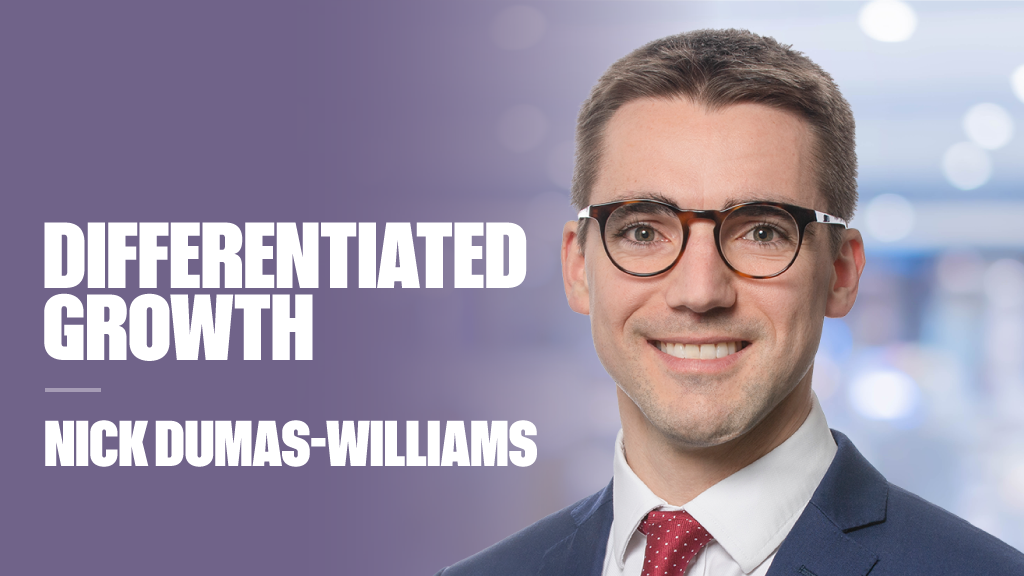With leading fund buyers from across Europe and the UK struggling to define exactly what ESG investing is, what hope is there for the rest of us?
Last Word Research asked professional fund pickers two questions: do they think there is a clear definition of what ESG investing is, and can they define it?
As perhaps expected, there was consensus that there is a lack of clear definition and as such a wide array of definitions, from the basic defining what the E the S and the G stand for to in-depth analysis of what ESG investing means for investors and their company.
One fund selector summed the problem up as “there are equally as many definitions [of ESG investing] as investors” and this view was borne out by the variety of responses from fund buyers and managers.
The many faces of ESG
3D Investing founder John Fleetwood focuses on ethical investment. When discussing the issues with ESG investing, he notes the phrases ‘ESG’ and ‘socially conscious’ tend to be thrown around extensively “but an impact investment is where a fund actually has a specific objective to make a positive social, environmental impact and devotes all of the fund capital for that end”.
Wellian Investment Solutions chief investment officer Richard Philbin believes ESG is a catchall term and there is no clear way to compare every fund branded that way accurately.
“ESG isn’t one thing because the E stands for something, the S stands for something and the G stands for something and… they aren’t entirely mutually agreeable with each other,” he says.
Meanwhile, Federated Hermes head of ESG integration Michael Viehs describes ESG as “focusing and systematically considering environmental, social and governance factors and stewardship insights in the investment process… making sense of all the ESG data which is out there”.
EPFR director of research Cameron Brandt describes a fund with an ESG slant as one that “either positively or negatively screens stocks that go into a portfolio with a social, environmental or governance goal in mind”.
It is clear there is not one way to define ESG investing which is something EPFR director of data Ian Wilson flagged back in 2018. “The whole ESG classification for funds is going to end up being a category with little substance,” he said. “It looks like investment advisers are starting to incorporate wording in their prospectuses that make it seem like they follow SRI principles in their investment selections.”
Identifying the issues confusion brings
This lack of a clear definition introduces several issues including the potential for greenwashing, confusion for fund selectors about which funds are ESG compliant, and inconsistency about which funds are included under the acronym.
Should a fund be included if it is only environmentally compliant? Both Viehs and Philbin use the well-known example of Tesla to highlight this point. While environmentally this company would be considered ESG compliant, from a governance point of view it struggles to pass the ethical test.
Last Word Research also asked fund selectors what they think are the biggest issues when it comes to defining ESG. Along with confusion and the risk of different interpretations of what ESG investing is, the most common response was the risk of greenwashing.
Viehs believes greenwashing is a problem but suggests another name for it would be “window dressing”. That is to basically have funds out there that “look more sustainable than they actually are”.
Philbin agrees, the lack of clarification allows room for a grey area. If a fund claims it will match the UN’s SDGs on education, and everyone will be educated, there is no clear clarification – is this to a basic level of knowing your ABCs, or is it everyone will have a PhD?
While this may not be greenwashing, it certainly allows a certain level of ambiguity which would involve further investigation on the part of the investor before committing. Philbin says: “Within a broad ESG fund, unless you completely know the investment approach then you can hide a multitude of sins.”
Brandt takes the stance that greenwashing may be a bit cynical, and that it may be more of a case of funds “talking the talk, before they walk the walk”. He believes that funds know they need to become more ESG compliant, “especially if they want to wean themselves off baby boomer money and attract money from millennials and Gen Xers”.
But perhaps a bigger issue is there is not a clear consensus even when it comes to the acronym to describe this type of investing. In the UK and Europe it’s ESG, whereas in America they talk about CSR (corporate and social responsibility). Philbin says: “If the ‘big power’ can’t agree on a simple three-letter acronym… how are we as fund managers, fund selectors and investors supposed to?”
How do investors measure if a fund is ESG compliant?
Brandt says, for example, if assessing firearms or oil companies, if they “meet some broader, social metric that a majority now deem to be bad will this exclude you from the [ESG] universe even though you check a lot of the other boxes?”
Philbin also questions to what standard these funds should be held. “Do you want to measure everyone to western standards, or do you want to look at a relative basis?”
The biggest issue all experts agreed on is that one size does not fit all. “Given the lack of clarity and standards, [ESG] doesn’t cover just one metric, it covers three very distinctive metrics, it is hard to find all three of these in just one company,” says Brandt.
In the finance industry “we want to quantify as much as possible, but there is a lot of subjectivity in ESG,” adds Viehs. While Philbin notes in a world where benchmarking is essential, everything is boiled down to its lowest common denominator.
However, as Viehs points out, given it is impossible to put just a single number on any fund for an ESG ranking, perhaps the usefulness of ESG rankings comes from their disagreement, sparking discussion within the finance industry as to what each ranking is looking for and where funds are falling short. These variations also allows investors to make a better, more fully informed investment decision, looking at which funds have been consistently ranked on numerous fronts.
Despite all these issues caused by a lack of clarification, the past two years has seen consistently more money moving into ESG compliant funds than their non-ESG counterparts.
Is there a future for ESG investing?
In the future Philbin believes funds will exits that focus on the E, the S and the G separately, allowing investors to make their own decision about which to commit to. Although Viehs sees it as possible to run a thematic fund with a specific focus on either the E the S or the G, he also believes “you cannot easily separate the E from the S and the S from the G” by focusing on one, you are forced to consider the other factors, although perhaps to a lesser degree.
EPFR views this similarly to Philbin and is looking to give every fund in its database a three-part score, given that some companies might be compliant with the E and the S part of ESG, but not the G. This will allow funds to continue to be recognised for their compliance with certain aspects of ESG investing, as well as potentially apply a certain amount of pressure for funds to work to comply fully with all aspects of ESG investing.
Viehs, who has been studying ESG for more than 10 years, believes ESG is definitely is not just a trend fad; as a society we are facing issues such as climate change, the Covid pandemic and social issues, which have amplified how essential ESG consideration is from a financial point of view.
Philbin thinks in 10-15 years the word ESG will no longer exist because it will be fully integrated into the research that every fund and asset manager does while Viehs believes “ESG will become one of the investment factors that institutional investors must consider, much like growth or value, small cap vs large cap”.
Similarly, Brandt says once a fund has announced it is becoming ESG compliant, “it is almost impossible to go back without a whole load of negative publicity”. This in turn will shine the spotlight on asset management houses and the necessity to have the right culture and the right tone from the top towards ESG and sustainable investing, according to Viehs.
If you have any questions, or would like to discuss any of this further, please contact Lottie McGurk on Lottie.mcgurk@lastwordmedia.com.











